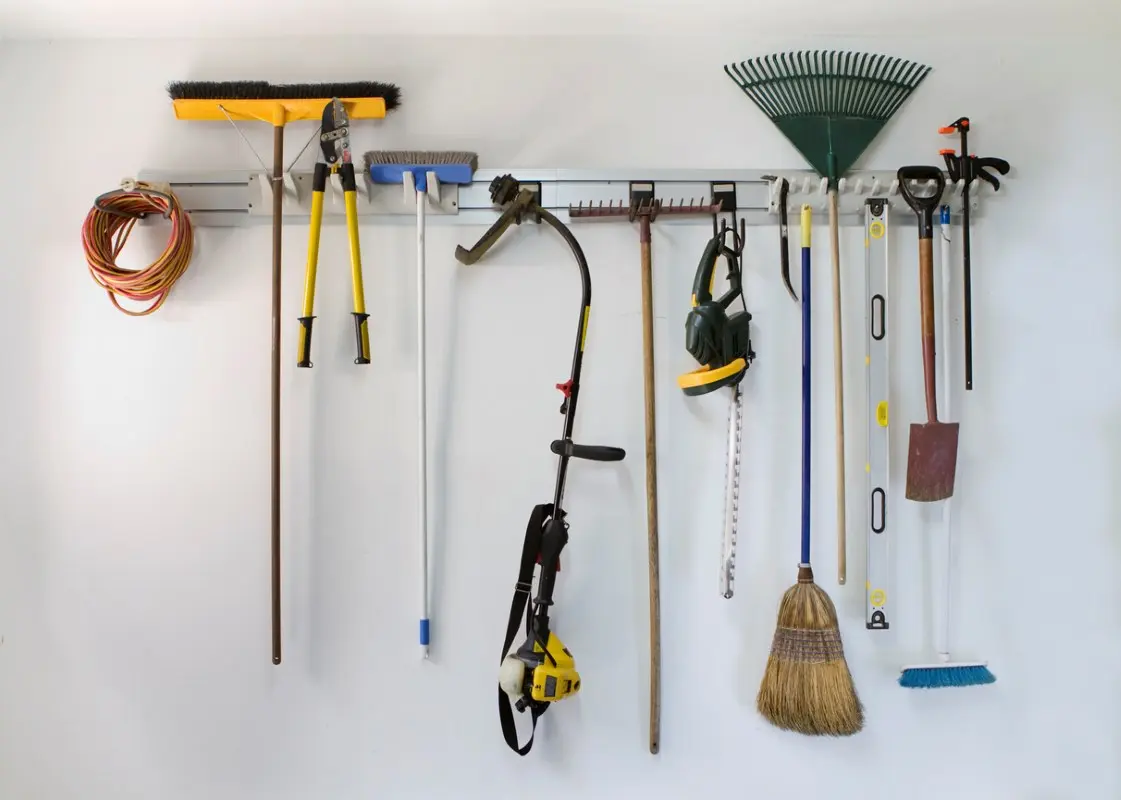
Preparing Your Garden for Winter: Storing Tools and Equipment
September 10, 2024 | Home Organization
As all the leaves fall and snow enters the radar, the time for tending to your garden has ended for the calendar year. But just because your flowers and vegetables have ceased growing doesn’t mean your gardening duties are finished.
Proper care for your gardening tools and equipment, including cleaning, maintenance, and storage, is essential to ensuring your shears, trimmers, trowels, and more are in prime condition come spring. We’ve compiled expert advice on efficiently preparing your garden for winter so that your plants will thrive next year.
How To Clean Garden Tools
Before you move your outdoor tools into storage for the season, proper maintenance procedures are essential to the longevity and care of these utensils. However, it’s not as simple as running everything under a hose and calling it good. Each tool should be given individualized TLC to help ensure it’ll be ready to go once the snow melts.
Care for Cutting Tools
Cutting tools, such as shears, pruners, and saws, must be kept clean and sharp to do their best work in the weeds. Steps we recommend for cutting tool care include:
- Remove any rust. Scrub away any rust spots with a wire brush or wool. For saws, run a damp brush along the blade to take off excess sawdust, then go over with an oil-dipped brush to help prevent new rust from appearing.
- Clean off debris. Wipe down the blades of scissors and loppers to remove any sticky sap and dirty debris. Afterwards, disinfect and oil them.
- Sharpen the blades. A user-friendly pocket blade sharpener can be used to prepare all cutting tools for their next use. Be sure to lubricate the hinges as well.
Care for Digging Tools
Shovels, hoes, spades, and trowels can take in a substantial amount of debris through their usage. These tools can break down and become less effective if not adequately cleaned. Before storing your digging tools, remember to:
- Wash them off. Clean off dirt and debris using a brush and hot water.
- Sand down the handles. Wooden handles should be sanded to help prevent any splinters from forming.
- Sharpen the blades. As a form of cutting tool, the blades of digging tools should be sharpened to slice through the soil more easily.
- Ward off rust. Coat the blade with a light layer of oil to help avoid any rusting during long-term storage.
Care for Lawn Mowers
Taking vital care of your lawn mower during the winter is essential to help it stay in tip-top shape. Otherwise, your wallet could be in for a rude awakening once it’s time to cut the grass next year. As you prepare your lawn mower for storage, we recommend that you:
- Run out the engine. On your final mowing job of the season, keep the engine running until no fuel remains. The tank should be dry in storage to prevent degradation and becoming a fire hazard. For battery-powered mowers, remove and store the power cell.
- Inspect the spark plug. Disconnect the spark plug before cleaning your mower to help prevent any accidents. Examine for any damage or debris, replacing immediately if you discover unwanted residue on the plug.
- Drain the oil. Put your mower on its side to drain the oil into a pan, ensuring the carburetor and air filter face up and away. Refill with a lower-weight oil once completed.
- Clean underneath. Carefully clean out mud and grass clippings from the mower’s underside, and remove and sharpen the blade if you feel comfortable doing so. If not, find lawn mower maintenance near you.
How To Organize Garden Tools for Storage
When storing gardeners’ equipment, staying organized is key. In general, you want to avoid keeping any tools on the ground, especially any items that could be ravaged by pests or dangerous to step on. If you don’t own a garage, basement, or shed with enough room to accomplish this, consider renting a personal self storage unit and use a size calculator to decide how much space you’ll need.
How To Hang Garden Tools
While you should keep everything you can off the ground, prioritize shelf or rack storage space for fertilizer, seeds, and metal tools. Use durable hooks to hang tools like saws and shears, and add shelves to house your fully sealed and dried seeds, soil, and fertilizer. Long-handled items like hoes and rakes can be stored inside garbage cans, with the handle down, to maximize space.
Be sure to label your seeds and miscellaneous items, and keep everything organized and easy to find. If anything needs to be replaced, do so now before next year rolls around.
Can I Keep Gardening Supplies in Self Storage?
While most of your tools are okay to be kept in self storage, there are a few exceptions. Storage facilities do not permit storing living things, including plants, in their units. Additionally, you cannot keep anything flammable in a storage unit, so all engines must be fully emptied before storing. This list of chemical products to avoid storing includes fertilizer, which can cause fires or chemical accidents.
That being said, storage units are a very popular option for securing gardeners’ equipment that needs a reliable space. From hoses to shovels, a storage unit can be a convenient, inexpensive shed for all your seasonal storage needs.
Find a Spot for Your Gardening Tools at Metro Self Storage
During the gardening off-season, having a secure space to keep your valuable equipment is essential. Metro Self Storage offers a range of storage solutions in various sizes, including climate-controlled storage, to help you store your belongings in a stable, consistent environment.
Whether you want a 5×5 storage locker for a few tools or a larger space for added seasonal storage, our 50 years of experience give us the resources and know-how to give you the room you need.
To discover the best self storage units near you, browse our storage facility locations to find your ideal Metro Self Storage, and contact us for more information!



